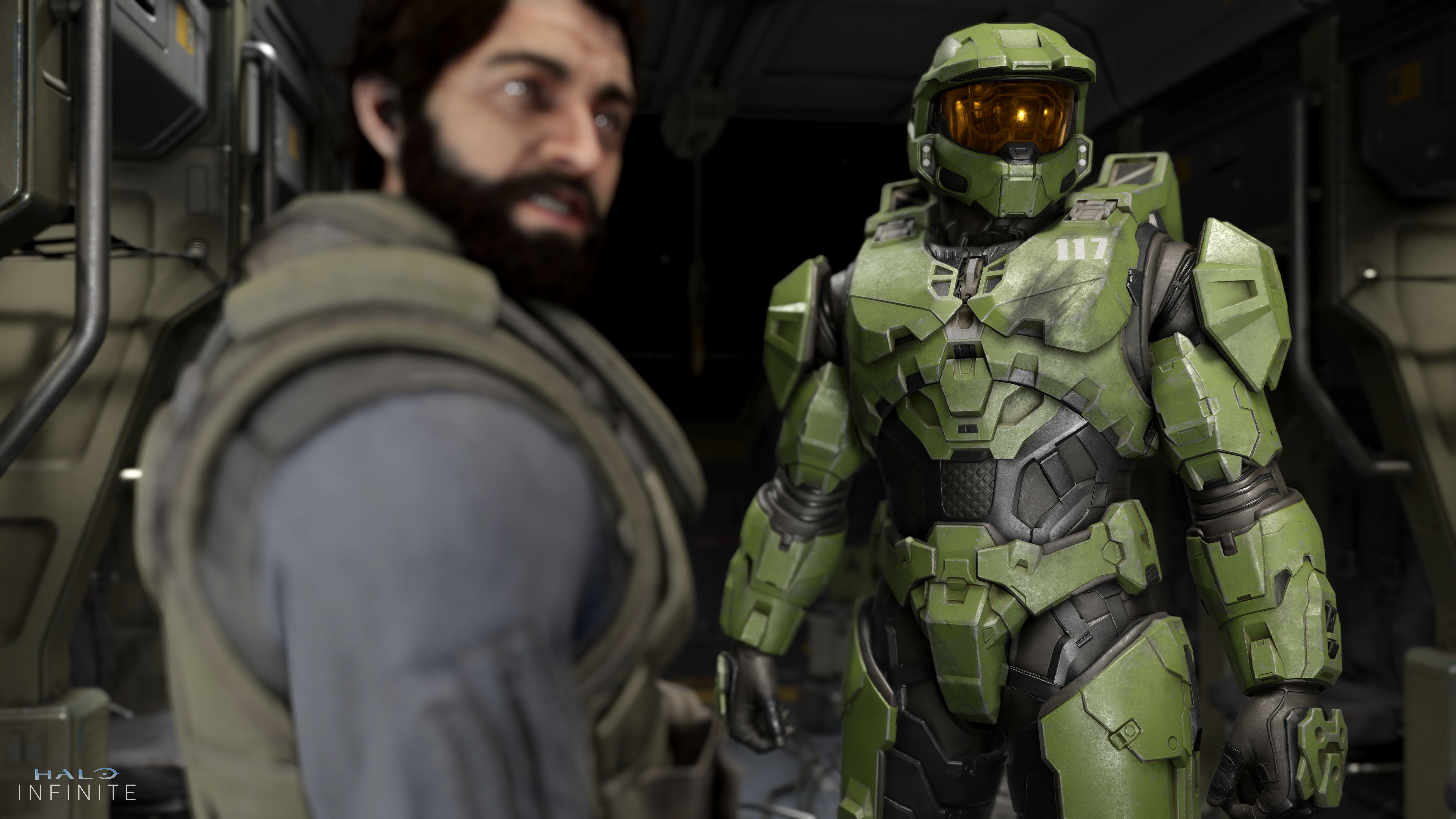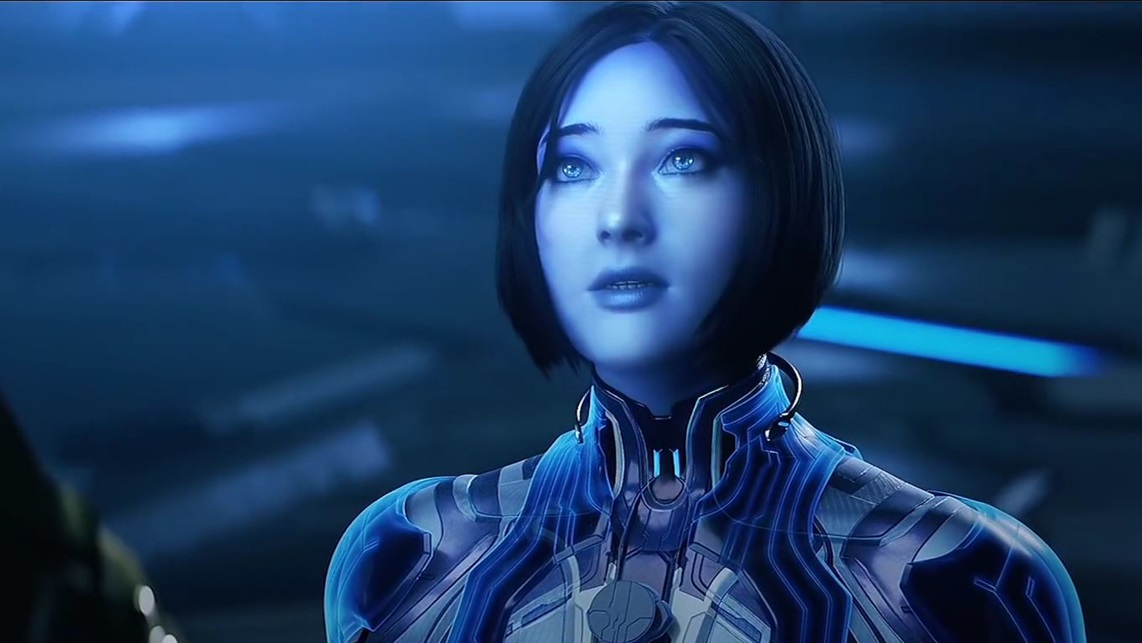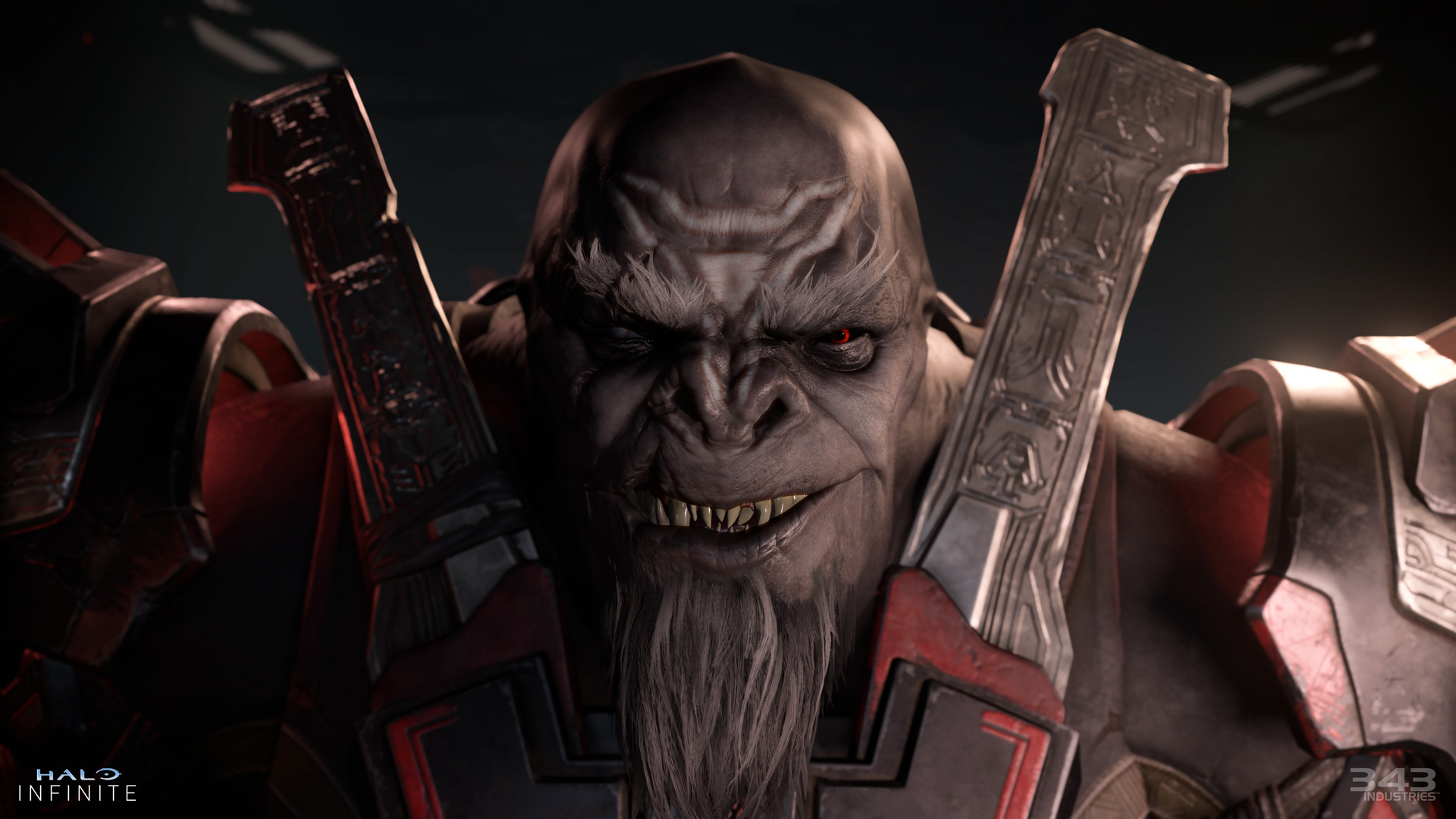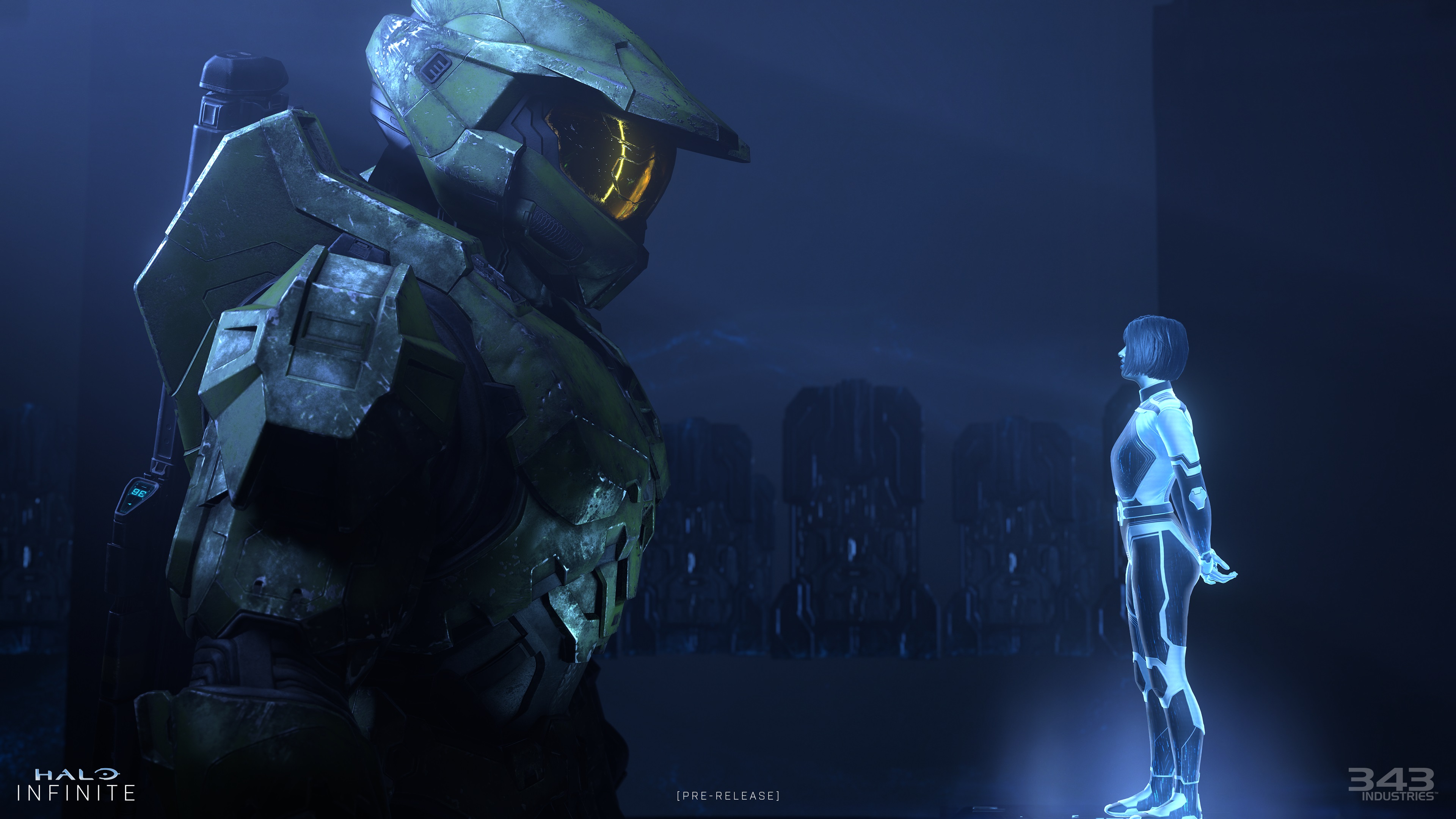Halo Infinite: What you need to know before you play
It's been a while since we last saw Master Chief, so make sure you're all caught up

It’s been a while since Microsoft announced that Halo Infinite, the Master Chief’s first adventure on Xbox Series X, was on the way. Moreover, it’s been even longer since the Chief’s last outing, Halo 5, hit the scene: six years, in fact.
Couple that lengthy period with the fact Halo 5: Guardians wasn’t particularly memorable, a lot of you might have forgotten exactly where the franchise is up to. There were huge portions of Halo 5 that I didn't recall at all during my recent replay, and I’m a self-proclaimed Halo obsessive.
Halo is also one of those franchises that doesn’t like to sit still. Even though there hasn’t been a new video game since 2017’s Halo Wars 2, which was a side story at best, 343 has still released novels, short stories and a couple of comics since we last saw the Chief. Unlike Bungie, 343 is quite fond of the expanded universe, and makes sure that the games tie in.
Not all of that extra fiction will relate to Halo Infinite, but 343 will probably incorporate at least some of it. Let’s run through the basics of what you need to know before you sink your teeth into Halo Infinite’s campaign.
Halo Infinite: The story so far

After defeating the Covenant and the Flood during the events of Halo 3, Master Chief and Cortana were stranded in deep space with no way of getting home. The Chief went into cryogenic stasis, awakening four-and-a-half years later, orbiting the Forerunner shield world Requiem.
Meanwhile Cortana, already traumatized from when the Flood Gravemind captured her, was reaching the end of her operational lifespan. As a "Smart AI," Cortana had a life expectancy of only seven years, after which she would begin deteriorating. This condition is known as Rampancy: an irreversible malfunction, in which AI memory starts to grow too big for the limited space in its neural matrix.
In simple terms, the AIs end up thinking themselves to death. In the process, they start suffering from uncontrollable emotional outbursts. This happened to Cortana during Halo 4’s campaign. In the end, she sacrificed herself to defeat the Didact, saving Master Chief and Earth from his attack.
However this didn’t kill Cortana. It simply sent her through slipspace, where she was able to make contact with the Forerunner Domain, basically a Forerunner internet spanning the entire galaxy. This cured Cortana of her Rampancy, and essentially gave her and other smart AIs the ability to live forever.
According to Cortana, the AIs' newfound immortality made them better suited to reclaim the Forerunner’s Mantle of Responsibility than humans. This led to the awakening of ancient Forerunner Guardians: mile-high machines capable of travelling the stars and quelling resistance where needed. These Guardians could help her and the other ‘Created’ AIs police the galaxy’s population.
At the end of Halo 5, Cortana's plan succeeded. The Created used the Guardians to fire off electro-magnetic pulses at major locations, and forced their populations into submission. Humanity’s main flagship, the UNSC Infinity, had to flee. Master Chief, the Arbiter and Catherin Halsey (creator of Cortana and the Spartans) began plotting ways to fight back.
The last shot of the game featured Cortana humming as the camera zoomed in on a Halo ring, suggesting The Created were seeking control of the galaxy-spanning superweapon. However it’s not clear whether this ring is Zeta Halo, the setting of Halo Infinite, or one of the other six rings.
Who are The Created?

The Created are a coalition of Smart AIs who have allied themselves with Cortana. They agree with her philosophy that AIs, rather than humans, should reclaim the Forerunner’s Mantle of Responsibility. The Created believe that the group responsible for protecting and guiding the future of the galaxy should be as long-lived as the Forerunners were.
The Mantle was essentially a Forerunner philosophy that gave them stewardship over the galaxy and all the species within it. In theory, the Mantle was a benevolent philosophy designed to protect biodiversity. In practice, it was more of a totalitarian rule that let the Forerunners crush any species that could challenge them — as they had done with prehistoric humanity.
When the remaining Forerunners left the galaxy, following the firing of the Halo array and the Flood’s defeat, they named humanity as their successors — the reclaimers of the mantle.
The Forerunner lifespan was several thousand years. This meant that they could enact long-term plans across the galaxy. According to Cortana and The Created, immortal AIs could do something similar, which makes them superior to humans, or other galactic species.
Unfortunately, The Created’s plan to ensure galactic peace was to force the galaxy into submission, just as the Forerunners had done. The novel Shadows of Reach by Troy Denning (Simon & Schuster, 2020) made it clear that the Created were not omniscient, and couldn’t monitor the entire galaxy at once. As such, it was possible to stay outside their notice, provided your faction didn’t get involved in any serious conflicts..
While a large number of AIs joined Cortana and The Created, not all of them agreed with her philosophy. Notable rebels included Roland, the AI onboard the UNSC Infinity, and Black Box, a powerful AI working on covert operations for the Office of Naval Intelligence.
It’s unclear what has happened to The Created prior to Halo Infinite. We only know that Cortana will have some sort of presence in the game. Hopefully, we’ll find out more as the story progresses.
Who are the Banished, Halo Infinite’s main villains?

The Banished are one of the newer additions to the Halo canon, having debuted in 2017’s Halo Wars 2. These aliens are one of the many factions vying for control in the aftermath of the Covenant’s collapse at the end of Halo 3.
The Banished are under the command of Atriox, a Brute warlord who became disillusioned with the Covenant after seeing his pack exploited on a string of suicide missions. The Covenant exiled Atriox after he prevented his own execution. From there, he formed the Banished with other exiles willing to follow his lead.
The Banished started life as a minor faction that could do little more than enact small-scale raids on Covenant forces. But following the Covenant civil war and the empire’s collapse, the Banished were able to salvage large numbers of ships and weaponry, while recruiting former Covenant forces and human criminals to their ranks.
By 2558, the Banished were a force to be reckoned with across the galaxy, having amassed a fleet large enough for Atriox to travel beyond the galactic rim to the Ark. Once there, the Banished slaughtered the human researchers stationed on the Forerunner installation in a bid to claim it for themselves.
However the Banished soon came into conflict with the UNSC Spirit of Fire, which had been adrift for the past 28 years, and had reached the Ark under unknown circumstances. The Banished and UNSC remained in conflict for several months, each seeking a way to return to the galaxy at large.
The UNSC were able to send Ellen Anders through a slipspace portal on the surface of a new Halo ring. But unbeknownst to them, a Forerunner Guardian had hijacked the journey mid-transit. Meanwhile, Atriox managed to send a message to the Banished forces that remained behind, instructing them to locate a new portal on the planet Reach.
Despite interference from the Spartan Blue team, the Banished were successful, with Atriox returning to Reach to lead his forces inside the galaxy. Banished forces remained on the Ark, continuing their campaigns against the Spirit of Fire, though it’s unclear what became of them by the time Halo Infinite begins.
What we do know is that Banished forces had launched brutal assaults across the rest of the galaxy, taking over Zeta Halo in the process. How they did this, and why Cortana’s Guardians didn’t stop it, seems to be a major plot point in the upcoming game.
What is Zeta Halo, Halo Infinite’s main location?

One of the seven rings that make up the Halo array, Zeta Halo doesn’t appear that much different from the other rings the Halo series has visited. However, the seventh ring is actually much older than its six counterparts.
Back when the Forerunners developed the rings to counter the Flood, it actually made two sets. The original set featured 12 larger rings, which were significantly less powerful than the ones we’ve seen in game.
Zeta Halo is the last of these 12 rings, having been upgraded and reduced in size after suffering significant damage in the later days of the Flood/Forerunner war.
Following the firing of the Halo array, wiping out all life in the galaxy, the ring lay dormant for millennia. Then, humans discovered its location during an archaeological dig on the Forerunner shield world Onyx in the year 2553. Later, in 2555, the Office of Naval Intelligence dispatched 300 scientists to study and map the ring.
We can also safely assume that the human contingent had to prepare the ring for decommissioning. After all, in Halo 4, Captain Laskey said that was the primary goal of the UNSC Infinity.
By 2558, the year of Cortana’s coup, almost 3,200 humans lived on the ring — 406 of whom were scientists. The rest were active military personnel. It’s not clear what happened following The Created’s takeover of the galaxy. However, we do know that a Banished faction, led by the brute warlord Escharum, has taken control of the ring, killing or imprisoning its human population.
Who, or what is The Weapon?

Based on Halo Infinite's E3 2021 trailer, "The Weapon" is a brand-new AI, designed to covertly take out Cortana and usurp her position within The Created.
We don’t know a great deal about this mission or what was involved, only that by the time Halo Infinite comes around, things didn’t go according to plan. We don’t even know The Weapon’s name, if she has one.
What’s obvious, however, is that The Weapon is another "Cortana model AI," which Cortana herself first mentioned in Halo 4.
In the Halo universe, scientists create smart AIs by scanning actual human brains. Since this process also destroys said brain, they tend to come from deceased organ donors. Cortana was different, in that her donor brain was actually from a clone of her creator: Dr Catherine Halsey, prominent human scientist and creator of the Spartan II program that produced Master Chief.
Halsey created 20 clones, only one of which was used to create an AI at the time. The rest, she kept in cryogenic storage in her lab at CASTLE Base on the planet Reach (last seen in Halo Reach). Following Cortana’s coup, and during the events of the novel Shadows of Reach, Halsey sent Master Chief and the rest of Spartan Blue team to retrieve the preserved brains from CASTLE base’s ruins.
While the novel doesn’t explicitly say what the Spartans are retrieving, Halsey does say that they will need it in the fight against Cortana. Knowing that information, as well as where Cortana came from and what Halsey had done over a decade earlier, it’s fairly easy to connect the dots. Remember, too, that Jen Taylor provides the voice of The Weapon. Taylor is the same voice actor who portrays Cortana and Halsey throughout the Halo franchise.
I hated Halo 5; is it worth playing Halo infinite?
From the outside looking in, it seems as though 343 has learned a lot from its previous two Halo outings. Halo Infinite is supposedly a "spiritual reboot" of the franchise, and employs an open-world system unlike anything we’ve seen in a mainline Halo game before.
From the bases and mission systems that 343 has teased, I’ve been getting some serious Shadow of Mordor vibes. The only time Halo has even come close to that would be in 2009’s Halo 3: ODST, which is one of the better games in the Halo saga.
Our Halo Infinite review is generally positive, with a revamped campaign that fixes a lot of Halo 5's mistakes — though is still imperfect in places.
Sign up to get the BEST of Tom's Guide direct to your inbox.
Get instant access to breaking news, the hottest reviews, great deals and helpful tips.

Tom is the Tom's Guide's UK Phones Editor, tackling the latest smartphone news and vocally expressing his opinions about upcoming features or changes. It's long way from his days as editor of Gizmodo UK, when pretty much everything was on the table. He’s usually found trying to squeeze another giant Lego set onto the shelf, draining very large cups of coffee, or complaining about how terrible his Smart TV is.
